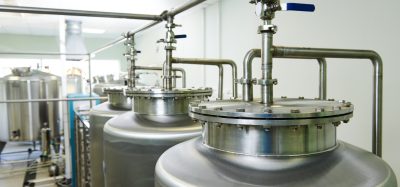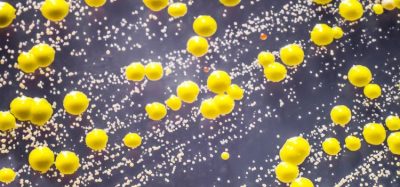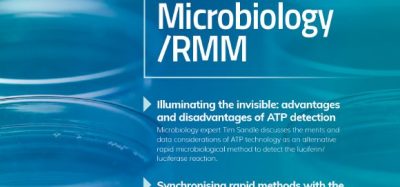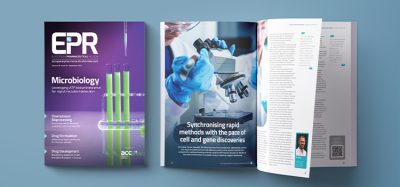Microbiological quality for non-sterile drug product for the 21st century
Posted: 22 February 2010 | Linda Skowronsky, Senior Development Microbiologist, GSK | No comments yet
For decades microbiological quality has remain dormant while the pharmaceutical industry has continued to evolve. Compendial methods and limits, while now generally harmonised throughout the world, still reflect the same methods utilised 100 years ago. Although there is more clarification around the number and types of organisms permitted in products since routes of administration are better defined, there is little change to what is considered an acceptable number or the types of organisms allowed in product. The good news is, however, in this new environment of Quality by Design (QbD) and the Process Analytical Technology Initiative1 outlined in Quality for the 21st Century, application of a Risk Based approach can provide some flexibility for microbial control. Through an enhanced understanding of the product and process gained during product development, some of the repetitive and inefficient end product testing may be replaced with real time or supportive data to confirm microbial quality.
For decades microbiological quality has remain dormant while the pharmaceutical industry has continued to evolve. Compendial methods and limits, while now generally harmonised throughout the world, still reflect the same methods utilised 100 years ago. Although there is more clarification around the number and types of organisms permitted in products since routes of administration are better defined, there is little change to what is considered an acceptable number or the types of organisms allowed in product. The good news is, however, in this new environment of Quality by Design (QbD) and the Process Analytical Technology Initiative1 outlined in Quality for the 21st Century, application of a Risk Based approach can provide some flexibility for microbial control. Through an enhanced understanding of the product and process gained during product development, some of the repetitive and inefficient end product testing may be replaced with real time or supportive data to confirm microbial quality.
For decades microbiological quality has remain dormant while the pharmaceutical industry has continued to evolve. Compendial methods and limits, while now generally harmonised throughout the world, still reflect the same methods utilised 100 years ago. Although there is more clarification around the number and types of organisms permitted in products since routes of administration are better defined, there is little change to what is considered an acceptable number or the types of organisms allowed in product. The good news is, however, in this new environment of Quality by Design (QbD) and the Process Analytical Technology Initiative1 outlined in Quality for the 21st Century, application of a Risk Based approach can provide some flexibility for microbial control. Through an enhanced understanding of the product and process gained during product development, some of the repetitive and inefficient end product testing may be replaced with real time or supportive data to confirm microbial quality.
The elements of the QbD approach are captured in ICH Q8: Product Development2 [which describes the information needed in the Common Technical Document (CTD) section 3.2.P.2 of a regulatory submission], ICHQ9: Risk Assessment3, and ICHQ10: Pharmaceutical Quality System4. Although not specific to microbiology, these guidance’s can be readily applied to the development of microbiological control strategies. This process begins at product development when the product profile (route of administration, target population, packaging attributes, intended use of the product, dosage form, etc) is defined. Once the product is clearly defined, the critical control attributes (CQA’s), or, the factors that can impact microbial quality in the formula and process are identified. The formula and process can then be built around these attributes. Risk assessment of these attributes, will reveal areas for application of control strategies leading towards a product and process with quality “built in” rather than “tested in”. Effective implementation requires a commitment of resources by management as microbiological control development isn’t merely a process of adding limits to products and testing to conformance.
The harmonised general chapter of the Ph Eur 5.1.45, criteria for drug product based on route of administration as well as excipients is listed with a caveat stating that the list:
“is not necessarily exhaustive, and for a given preparation it may be necessary to test for other microorganisms depending on the nature of the starting materials and the manufacturing process… the significance of other organisms recovered are to be evaluated in terms of the following:
- The use of the product: hazard varies according to the route of administration (eye, nose, respiratory tract)
- The nature of the product: does the product support growth? Does it have adequate antimicrobial preservation?
- The method of application
- The intended recipient: risk may differ for neonates, infants, the debilitated
- Use of immunosuppressive agents, corticosteroids
- The presence of disease, wounds, organ damage.
“Where warranted, a risk-based assessment of the relevant factors is conducted by personnel with specialised training in microbiology and in the interpretation of microbiological data. For raw materials, the assessment takes account of the processing to which the product is subjected, the current technology of testing, and the availability of materials of the desired quality.”
There is an expectation that the manufacturer will perform a risk assessment of the finished product and raw materials in the determination of the expected quality based on the product intent. Sutton (2006)6 states “merely showing absence of specified organisms [as described in Ph Eur 5.1.45], is not sufficient to demonstrate the microbial quality of a non-sterile product. Likewise, a formulation that is inherently hostile to survival and growth of organisms may not require testing at all,( e.g., Decision Tree #8 in ICH Q6A Specifications: Test Procedures and Acceptance Criteria for New Drug Substances and New Drug Product7). Rationale for exclusion of testing must be supported and approved by regulatory authorities.
Risk assessment is defined as the process of identifying problems which forces quantification, documentation, and integration of specific elements in order to make a decision or judgment; without which, decisions cannot be substantiated8. ICH Q93 defines it as the combined probability of occurrence and severity of harm. Besides assessing the finished product and raw materials for microbial limits, other critical quality attributes that should be assessed for potential of occurrence and probability of harm in relation to microbial contamination (weak areas) may include: stability, preservative efficacy, manufacturing process, in-process solutions, control of growth in intermediates, process water, environment, package and packaging process, bulk storage, etc. By documenting the factors that are likely to contribute to contamination or favour microbial growth, the “intuitive” knowledge of an experienced microbiologist as well as information gathered through experimentation is captured and can provide a basis for making decisions on when to test and what to test.
How well this assessment is carried out is dependent on the experience and training of the microbiologist. Experience should include a background in formulation with an understanding of ingredient interactions with preservative systems, and knowledge of inherent antimicrobial or growth enhancing characteristics of a formula, raw material, or in-process material. Experience should also include knowledge of microbial physiology, ecology, and an understanding of how organisms respond to changing environments. Experience in manufacturing and laboratory product testing are also valuable attributes of a good assessor. The addition of good supportive data generated during development is also needed to complete the picture for a thorough risk analysis. According to Janet Woodcock (2005)9 in order “to achieve QbD objectives, product and process characteristics important to desired performance must be derived from a combination of prior knowledge and experimental assessment during product development.”
The out-put from the accumulated risk assessments is the Microbiological Control Strategy and can be documented in the Common Technical Document 3.2.P.2.5 Microbiological Attributes section of a submission; alternatively a Microbiological Control Development Report can be generated. This output might describe rationale for eliminating or reducing end-product testing on a solid dosage, for example; or provide evidence for exclusion of testing for a required specified organism based on inherent product characteristics; or for inclusion of additional specified organisms when a health risk is probable. Other strategies might include:
- Test method development
- Control strategies for water, environment, cleaning
- Formulation and design of preservative system
- Stability strategy- finished product, bulk, in-use
- Rationale for testing frequency of commercial product
- Hold times for in-process solutions.
The accumulated information gathered during product development can be transferred to the commercial site as part of the Technology Transfer Process. This information can now be utilised as a base for changes that may be required during commercial production and control by the Change Control Process. This report begins the knowledge base on which to build that can be the supporting rationale for similar products or application of alternate testing programs or methods. This process is more thoroughly described in ICH Q104.
Conclusion
Using QbD and PAT approaches with identification and risk assessment of the critical control points in manufacture as seen through the eyes of a microbiologist can provide flexibility to the manufacturing and testing processes and lead to a more value added approach to microbial quality. A more complete understanding of the elements necessary to control within the product life cycle, may open the door to utilisation of better technologies for more rapid product release, as well as provide more flexibility through utilisation of prior knowledge.
In order to achieve this end, a heightened level of skill and experience in microbiological applications is required in addition to an understanding of the regional regulations and requirements. Although rapid methods have not yet lived up to their reputation (Middleton), the recent efforts by the FDA in their GMPs for the 21st Century10 have renewed interest and in time these technologies will be available. Some improvements could be in reducing product release time, improving quality of microbial testing, automating microbial testing, electronic capture of test data and information creation, improved responses to investigations11. Further improvements may include: more meaningful limits, more efficient transfers between laboratories, improved formulations and manufacturing processes, improved stability programs, better change control, and less non-value added testing.
References
- PAT (2004)- “A Framework for Innovative Pharmaceutical Development, Manufacturing, and Quality Assurance”; Sept; http://www.fda.gov/cder/guidance/6419fnl.pdf
- ICH Q8 Pharmaceutical Development + Annex, Step 5 EMEA June 2009
- ICH Q9 Quality Risk Management Step 4 November 2005
- ICH Q10 Pharmaceutical Quality System, Step 4 June 2008
- Pharmacopeial Europa 5.1.4 Microbiological Quality of Non-Sterile Pharmaceutical Preparations And Substances for Pharmaceutical Use Suppliment 6.3
- Sutton, S. (2006) “Harmonization of Microbial Limit Methods”, Pharmaceutical Technology, vol. 30, No,12 Dec.2006 p 66-72
- ICH Q6A Guidance on Specifications: Test Procedures and Acceptance Criteria for New Drug Substances and New Drug Products: Chemical Substances (2000)
- Koller, G. (2005) “Risk and Decision Making in business and Industry: A Practical Guide” Pub by Chapmann & Hall/CRC by Taylor and Francis Group p.90-95
- Woodcock, Janet Oct (2005);” Pharmaceutical Quality in the 21stCentury -An Integrated Systems Approach” http://www.aapspharmaceutica.com/workshops/ PharmaceuticalQuality100505/woodcock.pdf
- FDA 2004 “Pharmaceutical cGMPs for the 21st Century- A Risk-Based Approach” Sept http://www.fda.gov/cder/gmp2004/GMP_final report.htm#_Toc84065734
- Cundall, A. (2006) “Top Five Challenges Facing Pharmaceutical Microbiologists” American Pharmaceutical Review Vol. 9 issue 4 p.30-34









